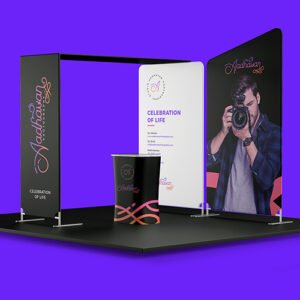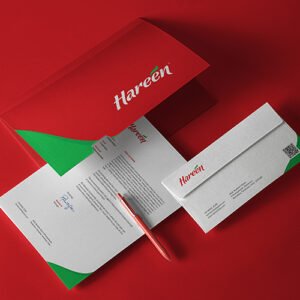Graphic design is a creative process that involves conceptualizing, planning, and creating visual content using various elements such as typography, images, colors, and layout. It is a form of visual communication that combines artistic skills, aesthetics, and technical expertise to convey messages, ideas, or information effectively.
Here is a step-by-step overview of the graphic design process, from concept to creation:
Research and Understanding:
Before starting any design project, it’s essential to gather information and understand the client’s requirements, target audience, and project goals. Researching the industry, competitors, and current design trends can also provide valuable insights.
Concept Development:
Based on the gathered information, the graphic designer starts brainstorming ideas and developing concepts. This stage involves sketching, doodling, and exploring different creative directions to find a compelling concept that aligns with the project objectives.
Initial Design:
Once a concept is selected, the designer begins translating it into a visual form. They create rough drafts or digital mockups to present initial design ideas. These drafts serve as a starting point for further refinement and feedback.
Typography and Layout:
Typography plays a crucial role in graphic design. Selecting appropriate fonts, sizes, and styles that complement the concept is essential. Designers also focus on creating an effective layout that organizes elements and guides the viewer’s eye through the design.
Color and Imagery:
Choosing the right color scheme is crucial as it evokes specific emotions and conveys the intended message. Graphic designers carefully select colors that harmonize with the design and evoke the desired response. Imagery, such as photographs or illustrations, may also be incorporated to enhance the visual impact.
Iteration and Feedback:
At this stage, the initial design is reviewed, and feedback is collected from the client or stakeholders. The designer incorporates the feedback, makes necessary revisions, and refines the design. This process may go through several iterations until the final design is approved..
Finalization:
Once the design is refined and approved, the graphic designer prepares the final artwork. This involves ensuring the design is in the appropriate file format, resolution, and color mode suitable for its intended use, such as print or digital media.
Delivery and Implementation:
The final design is delivered to the client or relevant parties. If it’s for print, the designer may work with a printer to ensure accurate reproduction. In the case of digital media, the designer may assist with implementing the design on websites, social media platforms, or other digital channels.
Throughout the graphic design process, it’s crucial for designers to maintain effective communication with clients, collaborate with team members (if applicable), and stay up-to-date with industry trends and software tools to create visually compelling and impactful designs.








